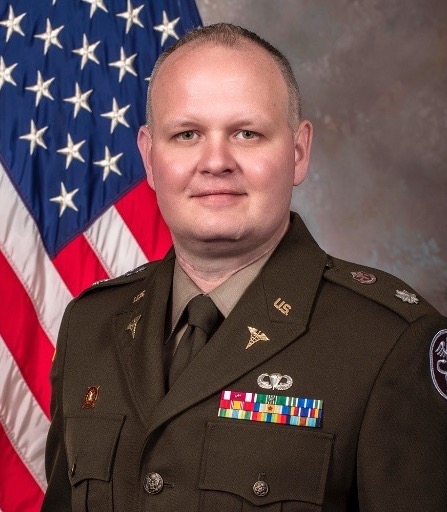Traumatic Brain Injury and
Psychological Health
Validating a New Algorithm to Diagnose Traumatic Brain Injury in Far-Forward Settings



Posted March 7, 2023
Lt. Col. Bradley Dengler, M.D., U.S. Army

When Service Members suffer a mild traumatic brain injury (mTBI) on the battlefield, or when civilians suffer an mTBI in remote locations or during sporting events, first responders at the scene lack an objective way to assess injury severity and diagnose mTBI. Current tools and evaluation systems lack the ability to predict when Service Members may be able to return to duty, leading to increased medical evacuations and reductions in available personnel. The same holds true for determining when athletes can return to play or when civilians can return to work or school after an mTBI. The lack of objective markers for diagnosing mTBI also leads to diagnostic uncertainty and therefore more evacuations to higher levels of care than may be necessary. This has brought to the forefront the unmet need for objective, rapid, and
In two collaborative, nonoverlapping awards funded by the CDMRP Combat Readiness-Medical Research Program (CRRP) and Traumatic Brain Injury and Psychological Health Research Program (TBIPHRP), Dr. Dengler and his research team are working to address that need by combining two mTBI assessments, blood-based biomarkers and pupillary light reflex (a measure of symptom severity), to develop an algorithm for the diagnosis of mTBI. Using the Abbott iSTAT Alinity diagnostic platform, biomarker levels will be assessed in the peripheral blood following brain injury. These biomarkers, glial fibrillary acidic protein (GFAP) and ubiquitin carboxy-terminal hydrolase L1 (UCHL-1), are already included in an U.S. Food and Drug
This study will be the first to combine blood-based biomarkers of brain injury with a marker of symptom severity in order to create a diagnostic algorithm and prediction model for symptom severity and length of care after mTBI. Eventually, the study team plans to incorporate the assessments into a single hand-held device that can be used at the point of injury to provide information regarding symptom severity and inform return-to-duty/work/play decisions.
References:
(1) Dengler BA, Agimi Yll, Stout K, et al. 2021. Epidemiology, Patterns of Care, and Outcomes of Traumatic Brain Injury in Deployed Military Settings: Implications for Future Military Operations. Journal of Trauma and Acute Care Surgery® 93(2):220-228.
(2) Boulter JH, Shields MM, Meister MR, et al. 2021. The Expanding Role of Quantitative Pupillometry in the Evaluation and Management of Traumatic Brain Injury. Frontiers of Neurology and Neuroscience 12:685313.
Links:
Last updated Monday, March 6, 2023

















